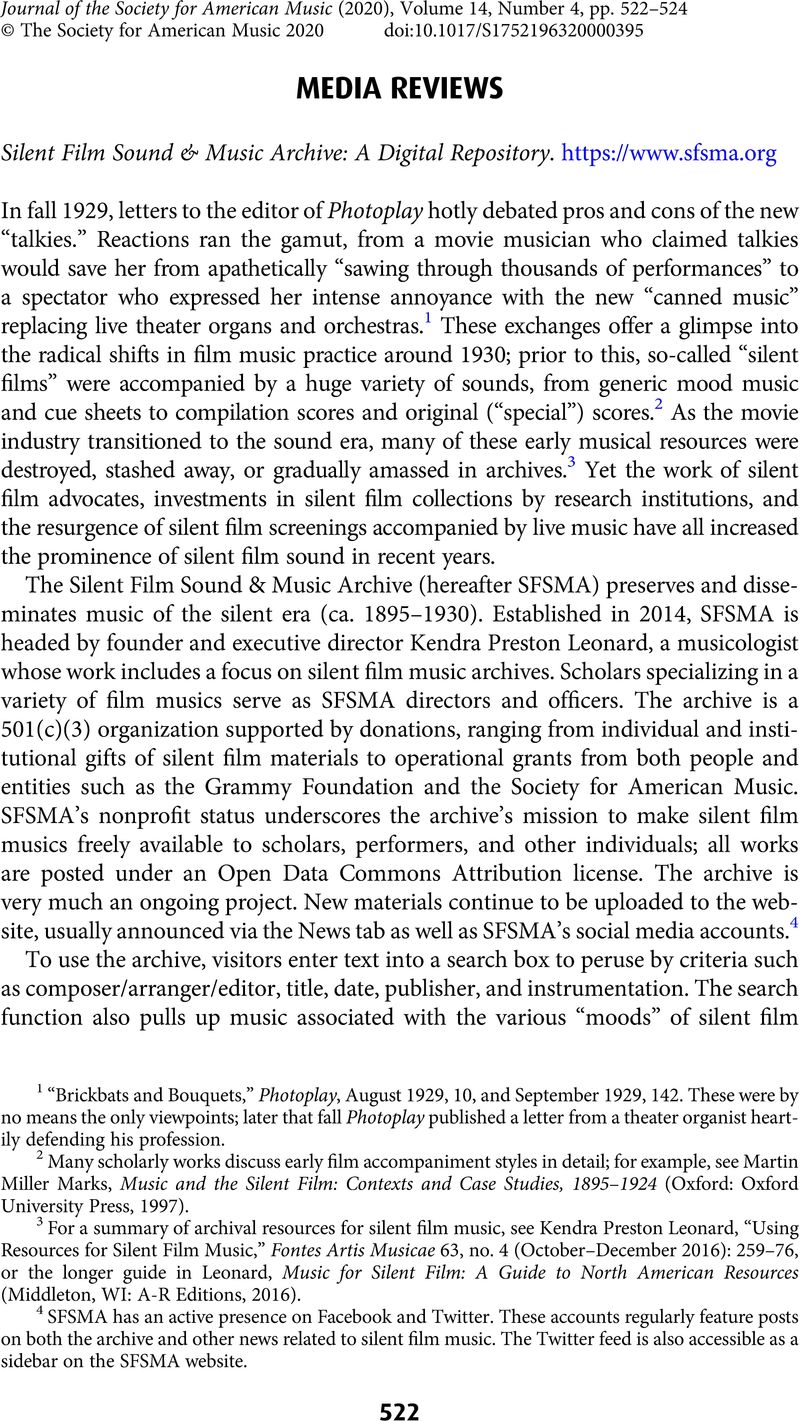No CrossRef data available.
Published online by Cambridge University Press: 19 November 2020

1 “Brickbats and Bouquets,” Photoplay, August 1929, 10, and September 1929, 142. These were by no means the only viewpoints; later that fall Photoplay published a letter from a theater organist heartily defending his profession.
2 Many scholarly works discuss early film accompaniment styles in detail; for example, see Marks, Martin Miller, Music and the Silent Film: Contexts and Case Studies, 1895–1924 (Oxford: Oxford University Press, 1997)Google Scholar.
3 For a summary of archival resources for silent film music, see Leonard, Kendra Preston, “Using Resources for Silent Film Music,” Fontes Artis Musicae 63, no. 4 (October–December 2016): 259–76Google Scholar, or the longer guide in Leonard, , Music for Silent Film: A Guide to North American Resources (Middleton, WI: A-R Editions, 2016)Google Scholar.
4 SFSMA has an active presence on Facebook and Twitter. These accounts regularly feature posts on both the archive and other news related to silent film music. The Twitter feed is also accessible as a sidebar on the SFSMA website.
5 For more information, see Kendra Leonard, “New Audio Recordings by Ethan Uslan,” Silent Film Sound & Music Archive, last modified July 26, 2016, http://www.sfsma.org/ARK/22915/new-audio-recordings-by-ethan-uslan/.
6 For example, see roughly three hundred pieces and around 2,300 instrumental parts within The Silent Cinema Presentations, Inc./Ben Model collection, digitized thanks to a grant from the Grammy Foundation. On how to locate these items, see From the Director, “New Posts Going Up,” Silent Film Sound & Music Archive, last modified October 13, 2016, http://www.sfsma.org/ARK/22915/new-posts-going-up/.
7 At the moment, SFSMA seems to primarily include sources connected to the United States film industry. Problems with a narrow focus on New York (“gothamcentrism”) in theater or film studies have been discussed by Robert Allen, C., “Decentering Historical Audience Studies: A Modest Proposal,” in Hollywood in the Neighborhood: Historical Case Studies of Local Moviegoing, ed. Fuller-Seeley, Kathryn H. (Berkeley: University of California Press, 2008), 20–33Google Scholar.